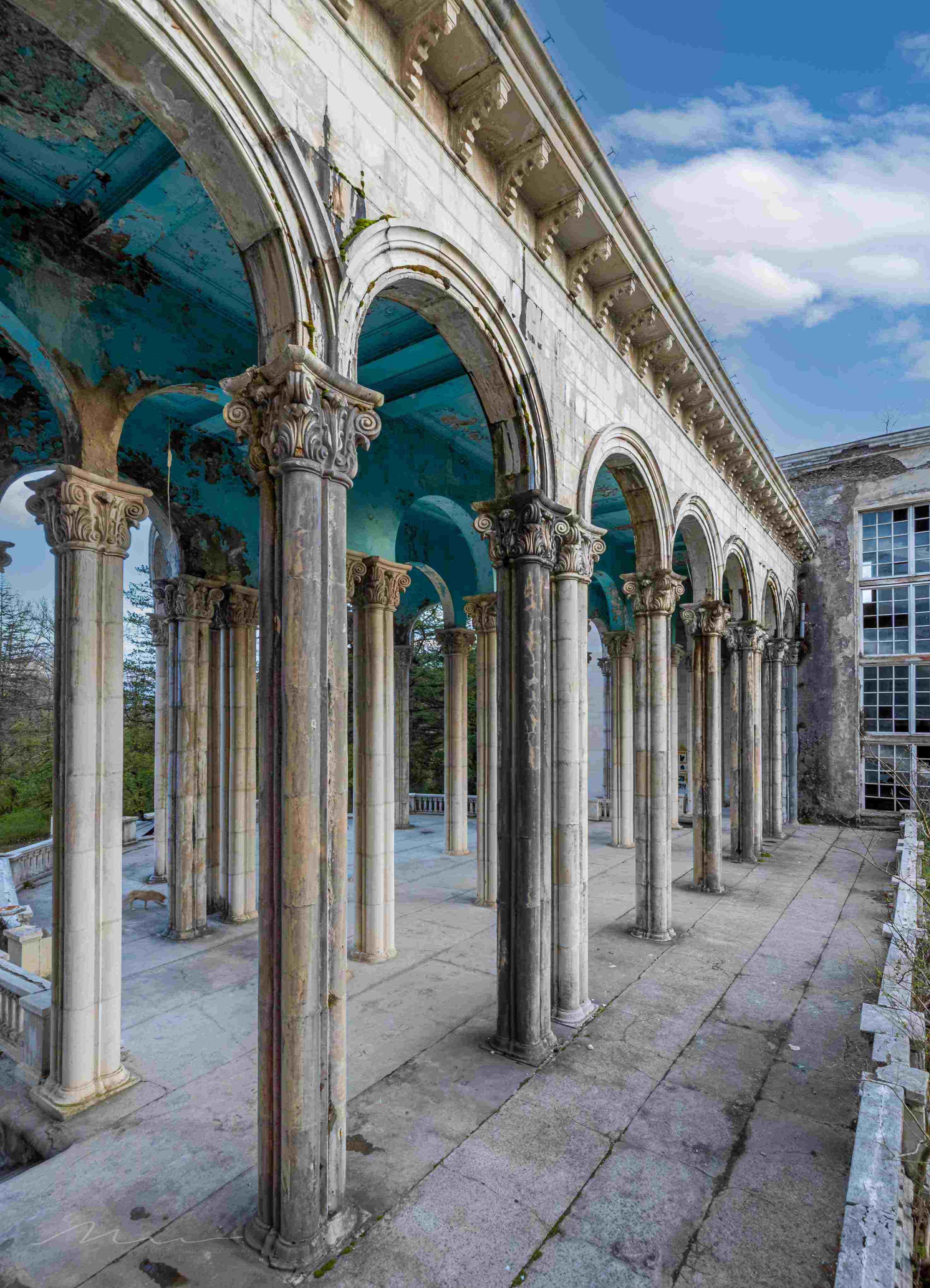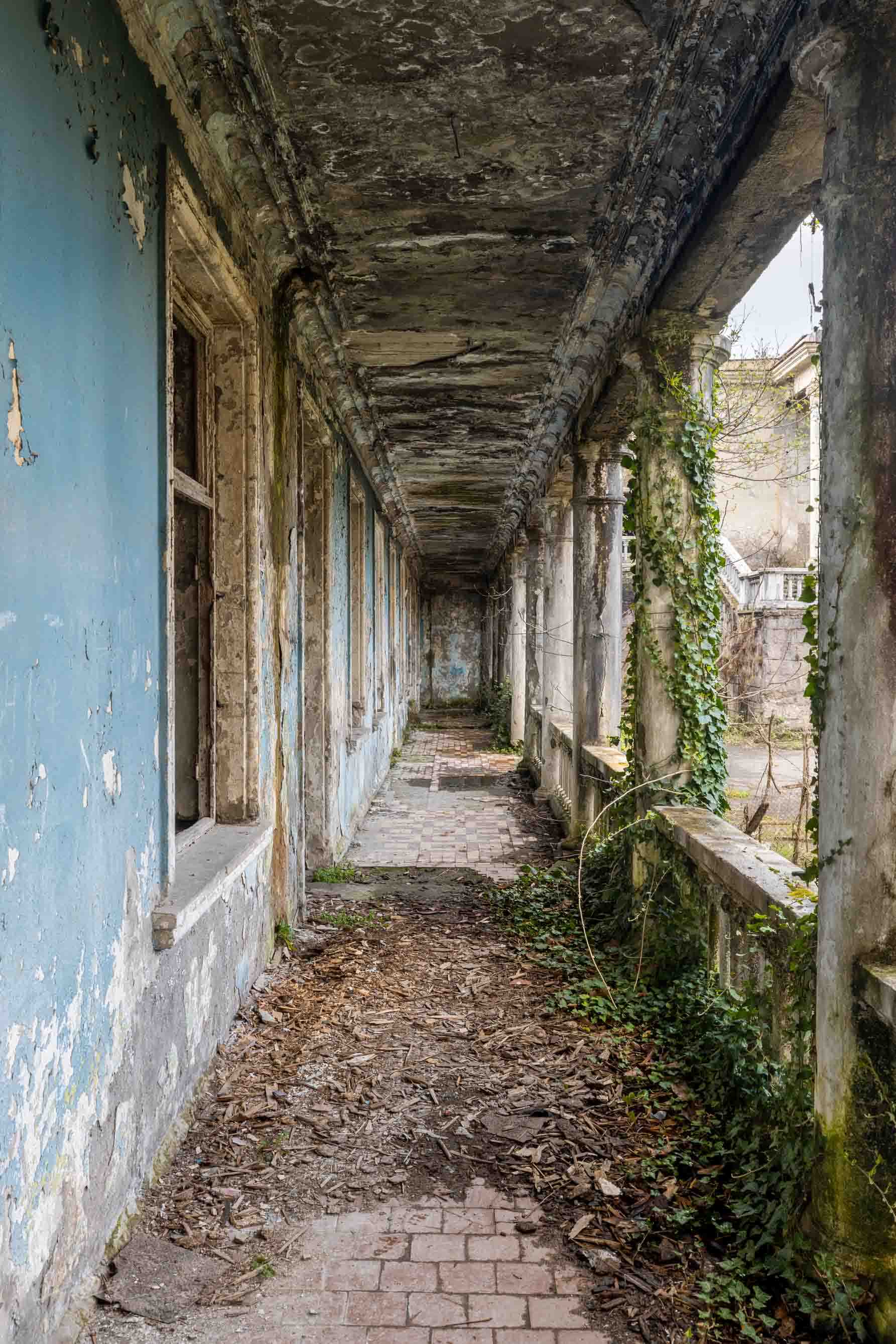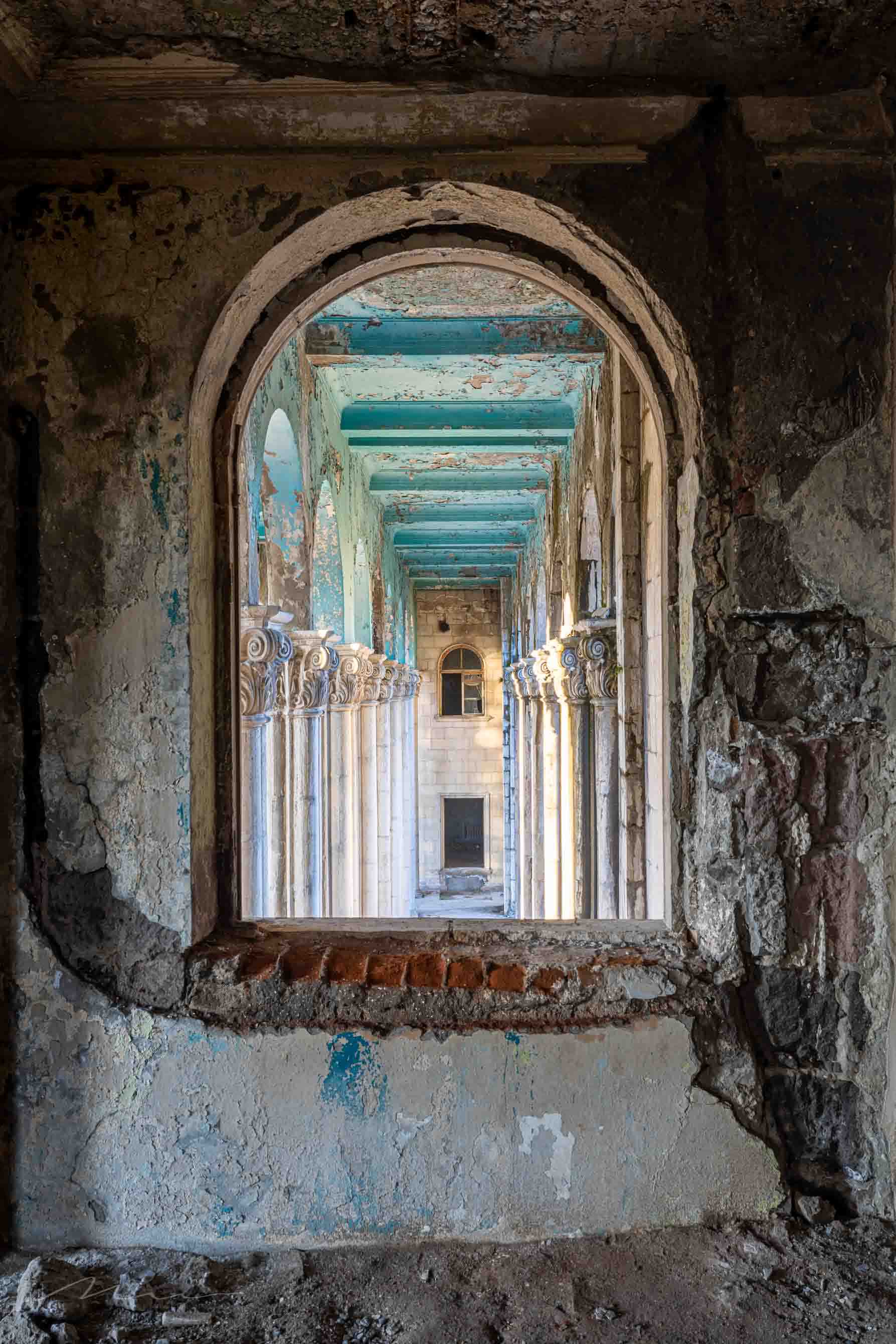Sanatorium Medea
- March 30, 2024 - Journeys
MEDEA SANATORIUM
The Medea Sanatorium in Tskaltubo, Georgia, is a significant architectural and historical landmark. Tskaltubo is a town located in the western part of Georgia, known for its natural hot springs and unique Soviet-era sanatoriums. The Medea Sanatorium was constructed during the Soviet era and served as a prominent health resort. It was designed to provide treatments utilizing the natural healing properties of the local mineral-rich hot springs. The sanatorium offered various medical therapies, including mineral baths, drinking cures, and mud treatments, to improve the well-being of its visitors.
Architecturally, the Medea Sanatorium reflects the distinctive Soviet architectural style prevalent during its construction. It features a grand and imposing design, incorporating elements of neoclassical and modernist influences. The structure typically consists of multiple floors, spacious halls, large windows, and balconies to allow patients to enjoy the surrounding natural scenery.
The construction of the architecturally Stalinist hotel Medea started in 1954 and finished in 1962.
Medea is one of several properties in Tskhaltubo that are part-abandoned and part-occupied by Internally Displaced Persons (IDP’s). They arrived here as a result of the ethnic-related Georgia-Abkhazia conflict which took place between August 1992 and September 1993. In the region, 8,000 to 9,000 IDP’s were given refuge in Tskaltubo, where there was a surplus of empty hotel rooms. This was due to the collapse of the town’s spa industry which, in turn, was a consequence of the fall of the Soviet Union in the early 1990’s.

Available as Fine Art, visit the shop to see more.
The mineral waters in Tskaltubo are known for their healing properties and are used to treat a range of conditions, including musculoskeletal disorders, respiratory ailments, and skin conditions.
Like many other sanatoriums in Tskaltubo, Medea experienced a decline in its operations and maintenance following the collapse of the Soviet Union. The economic and political changes that occurred during that period had a significant impact on the functioning and upkeep of such establishments.


7 times is still a charm
As previously mentioned, this city is renowned for its therapeutic springs. Medea was a priority, particularly during the early mornings and evenings, offering prime moments during sunrise and sunset to capture the beauty of the Medea gates. These gates were constructed in accordance with Stalin’s desires, featuring lofty arches.
The team and I made seven visits to Medea within a short period of time. It is a genuine masterpiece to behold, particularly due to the stunning decay that has now taken place. During each visit, we encountered numerous dogs; the city seems to be teeming with them. Among the many, one dog stood out, her name was Daisy. Since procuring food for the dogs proved to be quite challenging, we brought a portion of our breakfast for her. It’s no surprise that we were warmly greeted on all seven visits.

Joseph Stalin was big on the architecture of the Romans, especially the grandeur and pillars in buildings. That's partly why you see this architecture in here.

CRUMBLING
Today, the exterior of Meda is crumbling, yet in a state of decay which I love to see / encounter and to caputure.


Available as Fine Art, visit the shop to see more.














